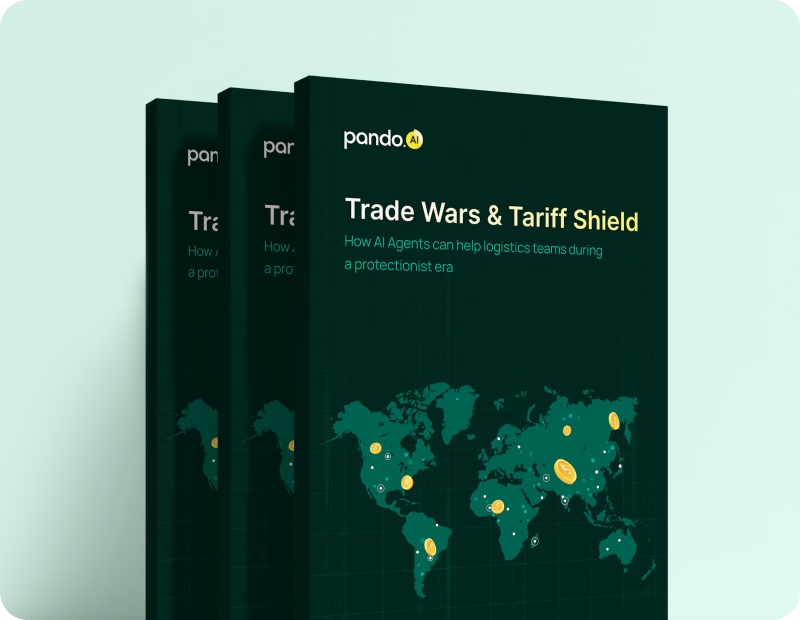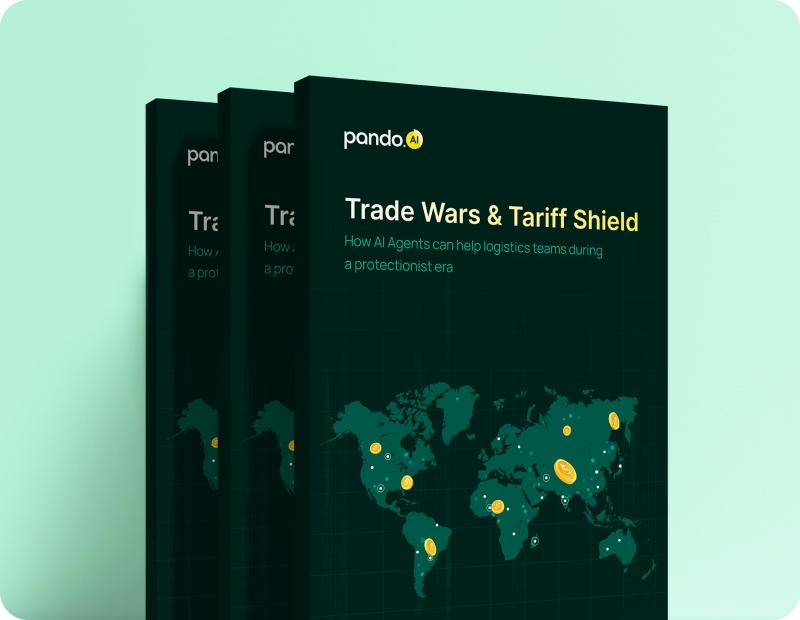-
Products Products
- Industry
- Initiatives
- Resources
- Company
- Book a demo

Before you go: Logistics leaders just dropped the truth on AI
The State of AI in Logistics 2025 is here — no hype, just real conversations and raw insights.
Outsourcing vs. Insourcing Logistics: A strategic imperative for CPG industry
Why consumer packaged goods manufacturers are increasingly taking control of their logistics operations worldwide?
Published on August 9, 2024 • 5 mins read
Prakash Ramnath

Why consumer packaged goods manufacturers are increasingly taking control of their logistics operations worldwide?
The Consumer-Packaged Goods (CPG) industry is facing a perfect storm. Soaring consumer expectations and unpredictable market conditions are forcing CPG giants to rethink their operations. A key area under scrutiny is logistics. Traditionally, outsourcing this function to third-party providers was the norm. But now, many are questioning whether bringing logistics in-house could be the key to unlocking greater control, efficiency, and cost savings.
According to Statista, the global CPG was valued at approximately $2 trillion in 2022 and is projected to reach $2.3 trillion by 2027, highlighting the industry's significant economic impact and growth potential. Consumer products are the everyday items we consume – from food and beverages to personal care products and household essentials. These products are typically purchased frequently, have relatively low prices, and rely heavily on brand recognition. Given the industry’s vast scale and competitive nature, optimizing logistics is crucial for success.
In this blog, we will delve into the factors driving this change, examine the potential benefits and challenges of outsourcing logistics, and assess whether it is indeed the future of the CPG industry.
The current state of logistics outsourcing in consumer-packaged goods
Traditionally, many CPG companies have relied on outsourcing logistics to third-party logistics (3PL) or fourth-party logistics (4PL) providers. A 3PL handles specific logistics functions like transportation or warehousing, while a 4PL manages and coordinates the entire supply chain. This outsourcing model has been driven by several factors:
- Cost efficiency: Shifting fixed costs to variable costs can lead to significant savings.
- Focus on core competencies: Outsourcing allows CPG companies to concentrate on product development, marketing, and sales.
- Scalability: 3PL and 4PL providers can easily adjust operations to match fluctuating demand.
- Global reach: Established networks facilitate expansion into new markets.
Challenges and risks of continued logistics outsourcing
The allure of cost savings and operational focus has driven many CPG companies to outsource logistics. However, this strategy is fraught with challenges that are increasingly difficult to ignore.
- Loss of control and agility: Outsourcing can lead to reduced visibility and control over the supply chain, hindering a company's ability to respond swiftly to market changes or customer demands. For example, during the COVID-19 pandemic, many CPG companies struggled to adapt to surging online orders due to limited control over their distribution networks.
- Data silos and brand risk: Externally managed logistics data can create information gaps, impacting decision-making and potentially leading to stockouts or overstocking. Moreover, 3PLs and logistics service providers are not equipped to handle any disruptions in the supply chain, which can directly harm a CPG's brand's reputation.
- Cost variability and lack of innovation: While outsourcing can initially reduce fixed costs, expenses can fluctuate unpredictably during peak seasons or economic downturns. Additionally, 3PL and 4PL providers may not always be at the forefront of logistics innovation, potentially leaving CPG companies at a competitive disadvantage.
These challenges, coupled with the growing complexity of supply chains and increasing consumer expectations, have prompted many CPG companies to reevaluate their outsourcing strategies.
The case for bringing logistics in-house
The challenges posed by traditional logistics outsourcing are driving a significant shift in the CPG industry. Many companies are now exploring the benefits of bringing logistics operations in-house.
- Enhanced agility and control: By managing logistics internally, these companies can make faster decisions and adapt more quickly to changing market conditions. For example, during the COVID-19 pandemic, companies with in-house logistics were better equipped to handle supply chain disruptions and shifting consumer preferences. Direct control over the supply chain also provides greater visibility and the ability to optimize operations for maximum efficiency.
- Data-driven decision-making and cost optimization: In-house logistics enables seamless integration of supply chain data with other business functions, leading to more informed decision-making. By streamlining operations and eliminating third-party margins, companies can achieve substantial long-term cost savings.
- Customization and innovation: In-house logistics allow CPG companies to tailor their supply chain to specific product requirements and market segments. This level of customization can enhance customer satisfaction and drive sales. Moreover, direct control over logistics operations fosters a culture of innovation, enabling companies to explore new technologies and processes to improve efficiency and sustainability.
- Rise of technologies and AI: Transportation Management Systems (TMS) have evolved to become more intuitive driving adoption, intelligent leveraging data and AI, and enabling you and your team to automate logistics operations, driving significant business impact.
While the transition to in-house logistics requires significant upfront investment and expertise, the potential rewards in terms of agility, control, cost savings, and innovation are substantial. Building the necessary infrastructure, hiring and training staff, and acquiring the required technology can be time-consuming and resource-intensive. Therefore, careful planning and execution are crucial for a successful transition.
A framework for a successful transition
Successfully transitioning to in-house logistics requires a structured and methodical approach. A comprehensive framework can guide CPG companies through this complex process.
1. Assessment and planning
The first step is to conduct a thorough assessment of the current logistics operations. Identify strengths, weaknesses, opportunities, and threats (SWOT analysis) to understand the starting point. Develop a detailed plan outlining the desired state of in-house logistics, including technology investments, staffing requirements, and process redesign.
2. Pilot testing
Before a full-scale implementation, consider piloting in-house logistics for specific product lines or regions. This allows companies to test processes, identify challenges, and refine operations on a smaller scale, minimizing risks.
3. Gradual implementation
A phased approach to in-house logistics is often advisable. Start with less complex operations and gradually expand to more critical areas. This strategy allows for incremental learning and adaptation, reducing the overall risk of disruption.
4. Continuous improvement
In-house logistics is an ongoing process. Implementing feedback loops, regular performance reviews and employee training ensures continuous improvement. By staying agile and adaptable, companies can optimize operations and maintain a competitive edge.
By following these steps, CPG companies can increase their chances of successfully transitioning to in-house logistics and reaping the associated benefits.
Today, your TMS solution vendor can become your digital partner to enable you and your team to assess trade-offs and guide you through every phase of your digital transformation journey.
Finding the right balance – Insource vs Outsource vs Hybrid
The CPG industry stands at a crossroads. The traditional model of outsourcing logistics is facing increasing scrutiny as companies seek greater control, agility, and cost efficiency.
However, bringing logistics in-house is not a one-size-fits-all solution. A careful evaluation of each company's specific needs and resources is essential. For some, a hybrid approach combining in-house operations with strategic partnerships may be the optimal path.
Ultimately, the future of CPG logistics lies in finding the right balance between control, cost, and flexibility. By carefully considering the options and implementing a well-defined strategy, CPG enterprises can position themselves for long-term success in an increasingly complex and competitive market.
Subscribe to Pando blog and Crossroads newsletter now!
Stay up to date with the latest logistics, transportation, and supply chain tips and news.
Subscribe Here!

Related blogs
Industry landscape and supply chain trends reshaping the Consumer-Packaged Goods (CPG) industry – Part 1

Industry landscape and supply chain trends reshaping the Consumer-Packaged Goods (CPG) Industry – Part 2











